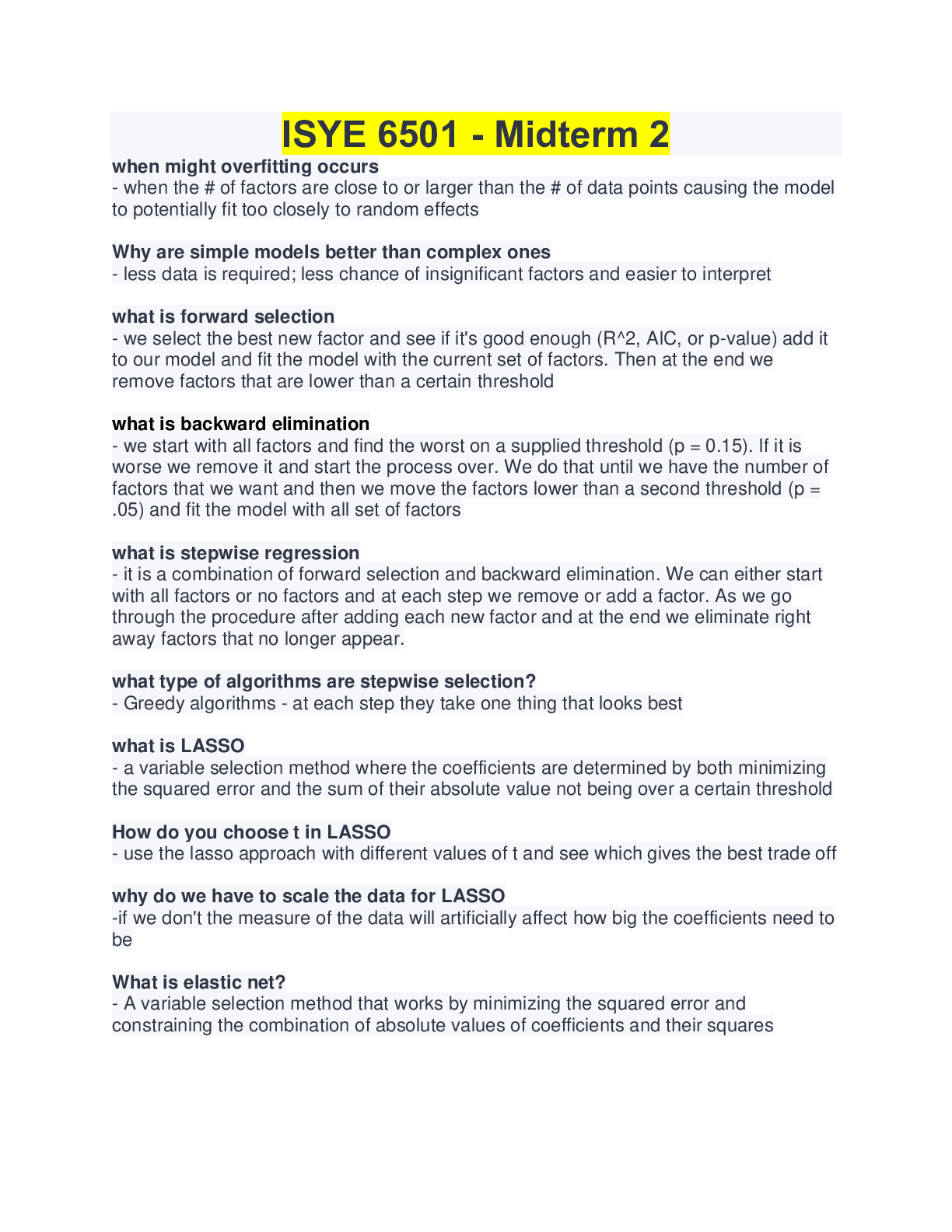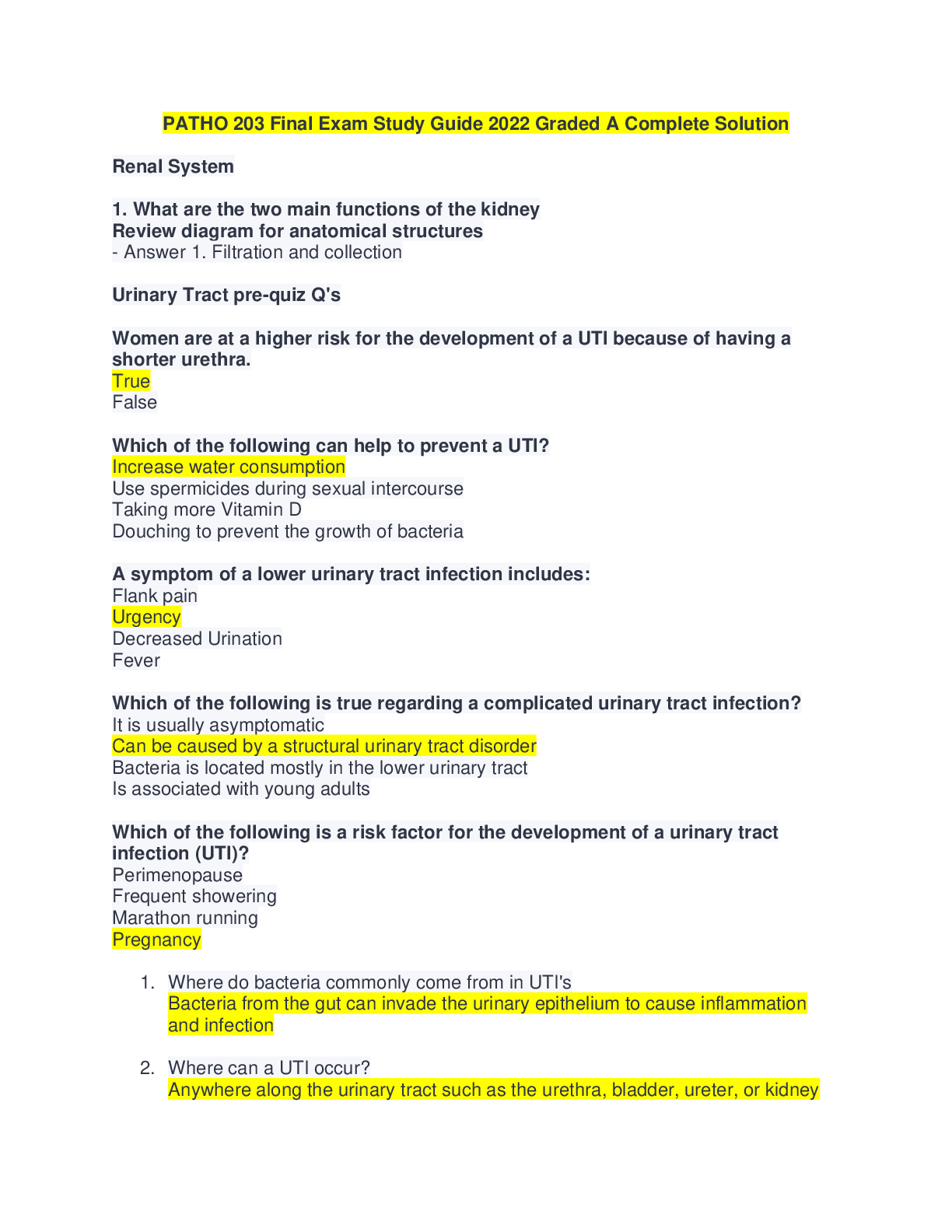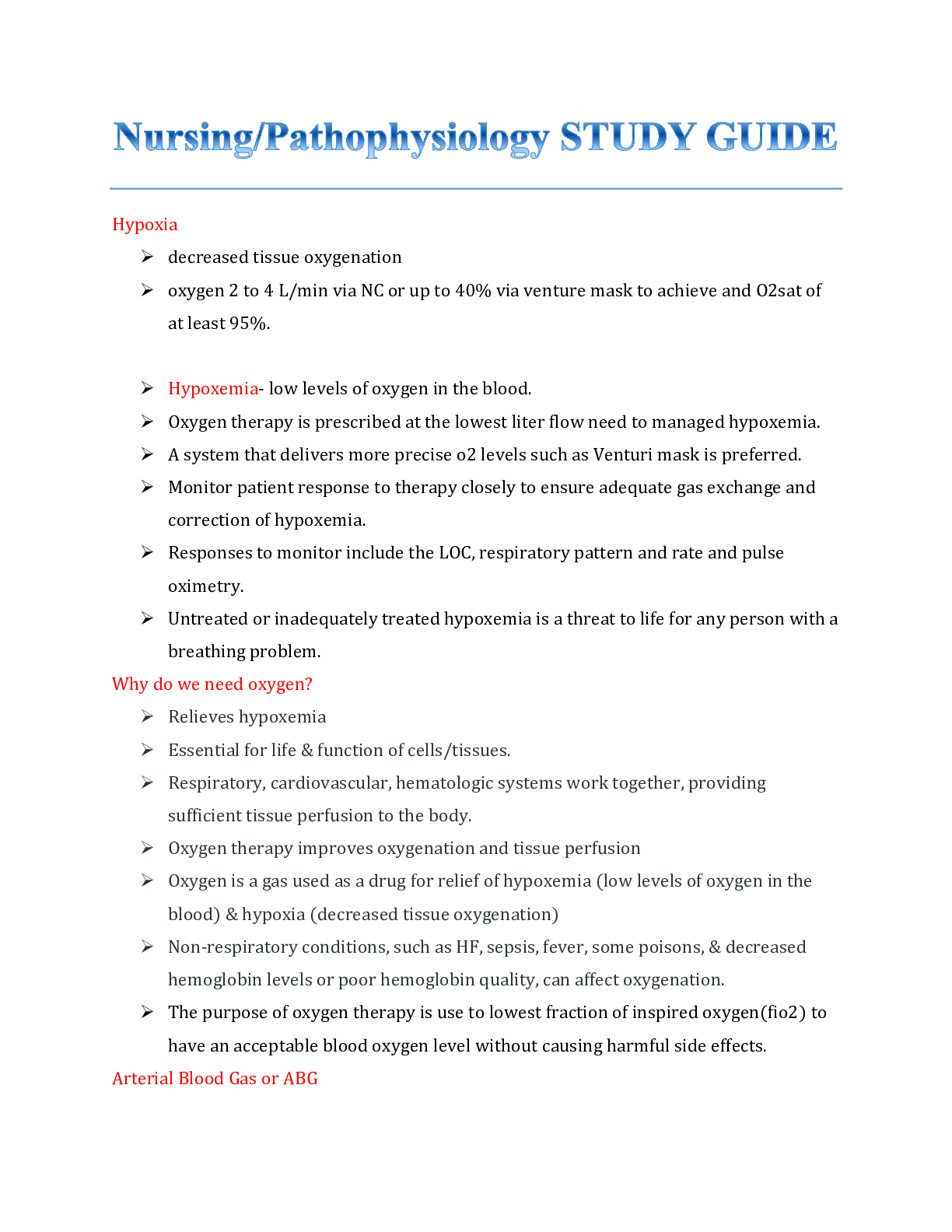Pathophysiology > STUDY GUIDE > MARYVILLE UNIVERSITY NURSING PROGRAM NURS 611 – ADVANCED PATHOPHYSIOLOGY Study Guide Questions for (All)
MARYVILLE UNIVERSITY NURSING PROGRAM NURS 611 – ADVANCED PATHOPHYSIOLOGY Study Guide Questions for Exam 4
Document Content and Description Below
1. Define diffuse cortical dysfunction. Disease process may PRODUCE DIFFUSE BILATERAL cortical dysfunction 2. Identify populations at risk for neurological pathophysiology. Immunocompromised, HIV/A... IDs, Cardiac problems (HTN), poor lifestyle (smoking, obese, family history, etc) 3. Define the types of cerebral edema. Vasogenic- occurs due to a breakdown of the tight endothelial junctions that make up the blood–brain barrier. This allows intravascular proteins and fluid to penetrate into the parenchymal extracellular space. Once plasma constituents cross the barrier, the edema spreads; this may be quite rapid and extensive. As water enters white matter, it moves extracellularly along fiber tracts and can also affect the gray matter. This type of edema may result from trauma, tumors, focal inflammation, late stages of cerebral ischemia and hypertensive encephalopathy. Cytotoxic- blood–brain barrier remains intact but a disruption in cellular metabolism impairs functioning of the sodium and potassium pump in the glial cell membrane, leading to cellular retention of sodium and water. Osmotic- Plasma dilution decreases serum osmolality, resulting in a higher osmolality in the brain compared to the serum. This creates an abnormal pressure gradient and movement of water into the brain, which can cause progressive cerebral edema, resulting in a spectrum of signs and symptoms from headache and ataxia to seizures and coma. Interstitial- occurs in obstructive hydrocephalus due to a rupture of the CSF–brain barrier [Show More]
Last updated: 2 years ago
Preview 1 out of 7 pages
.png)
Buy this document to get the full access instantly
Instant Download Access after purchase
Buy NowInstant download
We Accept:

Reviews( 0 )
$7.00
Can't find what you want? Try our AI powered Search
Document information
Connected school, study & course
About the document
Uploaded On
Aug 09, 2021
Number of pages
7
Written in
Additional information
This document has been written for:
Uploaded
Aug 09, 2021
Downloads
0
Views
64
















.png)

.png)




